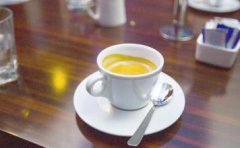A brief introduction to the planting situation of Rose Summer Fine Coffee beans, Geographic location, Climate and altitude

In 1924, the Swede Harns. Elliot founded the esmerada farm, which was not a coffee farm but a pasture, 40 years later in 1964. Mr. Bideson's grandfather, Ruth Loveau. M. bideson bought esmerada farm in order to retire and have a place to live, grandfather lut ruff. Born in Sweden, Mr. Bidesson was president of the Bank of America and director of the United Nations Development Programme.
His son Blais. Mr. bidazon moved from california to panama in 1973, inherited his father's farm, changed most of the farm to coffee cultivation in 1987, and purchased machinery for refining coffee in 1994 to create a brand investment. Mr. and Mrs. Bideson raised three children, Eligu (born Philadelphia, 1966), Richelieu (born Sweden, 1967) and Daniele (born Panama, 1974), while the coffee farm was established.
In 1996 Braith and Rachel visited a farm for sale in the Haramijon area of the Boketty Valley and were attracted by the beauty of the farm and immediately bought it. This is Esmeralda? Harami Jonon Farm, third son Danielle. It was on this farm that Mr. Bidesson planted the coffee world's attention-Geisha coffee.
In 1931, it was exported from Geisha Mountain in southwest Ethiopia to Kenya, Tanzania and Costa Rica in obscurity. It was transplanted to Panama in the 1960s. After nearly half a century, it was amazing. It defeated the ever-winning varieties such as Boben, Kadulla, Kaduai and Tibika, and won the first prize in the 2005, 2006 and 2007 Panama National Treasure Bean Cup Test Competition. In 2007, the International Famous Bean Cup sponsored by the American Fine Coffee Association (SCAA) won the championship again, and the bidding price was sold at 130 US dollars per pound, setting a record for the highest price in the history of competition beans. It is reported that the subsequent Panama National Treasure Bean Competition will be divided into two groups: Rose Summer and Non-Rose Summer, so as not to be robbed of the glory of other varieties by Rose Summer. Guixia is a member of the Tibika family, but after leaving Ethiopia for more than 70 years, he has become famous. Moreover, Ethiopia is a treasure trove of Arabica genes. Any donation of a variety abroad is enough to make waves in the coffee market.
Guisha is cultivated in many parts of the world and is the new king of fine coffee. Panama, Guatemala, Colombia and other Latin American countries have higher quality and high price.
Floral, tropical fruit, intense sweetness; these are the feelings that rose summer has always brought us. Properly baked, they make you feel like sipping the fragrance of a bouquet of flowers. In case you haven't heard the story, Rose Summer, an ancient native from Ethiopia, was brought as a coffee sample into Costa Rica's coffee experimental plantations and distributed to several small farms for small-scale trials.
Not much attention was paid to the rose until the Esmeralda estate in Panama separated it from the rest and won the national coffee championship.
She's so extraordinary, fruity and floral, it's like a Yega Shefi from Ethiopia, Africa, halfway around the world. Of course, that's old news now. Some small farms have also been able to get rose seeds, and eager to grow their own rose summer coffee green beans have a very beautiful blue-green, jade-like warm texture, smell of fresh grass, peach, berry flavor and most coffee beans do not have the characteristic creamy sweetness of oolong tea, it seems that aroma and taste these things need to be associated, but the light tea smell is we can clearly feel [1].
In order to highlight the characteristics and aroma of this bean, the roasting degree is close to the second explosion. The roasting degree is close to the second explosion and the second explosion is more commonly used. This can give full play to the characteristics of the bean itself. Too shallow will give off miscellaneous flavor, too deep will lose flower aroma and fruit acid. Of course, this should also be adjusted according to the characteristics of the coffee bean and the understanding of the roaster for the bean itself.
In 1931, it was exported from Geisha Mountain in southwest Ethiopia to Kenya, Tanzania and Costa Rica. In the 1960s, it was transplanted to Panama. After nearly half a century, it was amazing. It defeated the ever-winning varieties such as Boben, Kadulla, Kaduai and Tibika, and won the first prize in the 2005, 2006 and 2007 Panama National Treasure Bean Cup. In 2007, the International Famous Bean Cup sponsored by the American Fine Coffee Association (SCAA) won the championship again, and the bidding price was sold at 130 US dollars per pound, setting a record for the highest price in the history of competition beans. It is reported that the subsequent Panama National Treasure Bean Competition will be divided into two groups: Rose Summer and Non-Rose Summer, so as not to be robbed of the glory of other varieties by Rose Summer. Guixia is a member of the Tibika family, but after leaving Ethiopia for more than 70 years, he has become famous. Moreover, Ethiopia is a treasure trove of Arabica genes. Any donation of a variety abroad is enough to make waves in the coffee market.
Geisha is planted in many parts of the world and is the new king of fine coffee, among which Panama, Guatemala, Colombia and other Latin American countries have relatively high quality, high price, tropical fruit and strong sweetness; these are the feelings that Geisha has always brought us. Properly baked, they make you feel like sipping the fragrance of a bouquet of flowers. In case you haven't heard the story, Rose Summer is an ancient native from Ethiopia that was brought into Costa Rica as a coffee sample and distributed to several small farms for small-scale trials.
Not much attention was paid to the rose until the Esmeralda estate in Panama separated it from the rest and won the national coffee championship.
She's so extraordinary, fruity and floral, it's like a Yega Shefi from Ethiopia, Africa, halfway around the world. Of course, that's old news now. A few small farms are getting summer roses, and eager ones want to grow their own.
However, the results vary, depending on weather, soil and altitude, and the taste of this "star" variety does not seem to be the same in different geographical locations. But in the Actanango region, we see typical rosewood characteristics: slender bean shapes, changes in baking, and elegant, ripened flavors in the cup.
Rose summer coffee green beans have a very beautiful blue-green, jade-like warm texture, smell fresh grass, peach flavor, berry flavor and most coffee beans do not have the unique milk sweet flavor, it seems that aroma and taste of this kind of thing is very need to cooperate with the association, but the light tea gas is we can obviously feel the roasted ripe beans, it seems that there will be some "folds", there are "sexy folds" beans are to highlight its original flavor and fruit acid, However, if the quality of the raw beans themselves is not high, there will be some miscellaneous flavors, such as rotten earthy, grassy and dry flavors, which should be avoided by bakers as much as possible. Baked rose summer has charming lemon citrus aroma and super sweet honey cream fragrance, tropical fruit and intense sweetness; these are the feelings that rose summer has always brought us. Properly baked, they make you feel like sipping the fragrance of a bouquet of flowers. Perhaps you don't know the story of Rosedale, an ancient native from Ethiopia, brought as a coffee sample to Costa Rica's coffee experimental gardens and distributed to several small farms for small-scale trial cultivation Rosedale's dry aroma is very bright, with rose and jasmine floral characteristics, but also with pomelo and citrus aromas, light roast nutty aromas; wet aromas also have hazelnut flavor, and more floral characteristics. In terms of taste and flavor, it may be slightly mild and subtle compared with the previous aroma, slightly cooled down, and the fruity flavor gradually increases with the temperature drop. The cold aroma is excellent (sweet preserved fruit, rose hip, orange glaze sauce, strawberry jam, pine flavor, cherry, vanilla, rose gradually fade, and lemon flavor can be derived). It's a coffee that can be praised with a lot of adjectives, sweet back, and it's testing the brightness of the coffee, especially in light roasts.
Important Notice :
前街咖啡 FrontStreet Coffee has moved to new addredd:
FrontStreet Coffee Address: 315,Donghua East Road,GuangZhou
Tel:020 38364473
- Prev

A brief introduction to the flavor, taste and aroma characteristics of Colombian rose coffee beans
Of course, these are all old news now. Some small farms also get summer roses and are eager to grow their own roses. However, the results are different, and this star variety seems to have different tastes in different geographical locations due to the influence of weather, soil and altitude. But in the Aktenango region, we see a typical
- Next

A brief introduction to the history and culture of the origin and development of Panamanian boutique coffee jadeite manor
Red bid Rose Xia participates in the global bidding auction in May every year. Green bid does not participate in the auction, but it is also of high quality and the price is slightly cheaper. Buyers who buy red bid can give priority to buying green bid. [flavor description]: oolong tea, peach, honey, fresh and comfortable, bright and balanced, strong hierarchical sense of aroma, the whole aroma and caramel sweetness wrapped together, entrance tongue
Related
- Detailed explanation of Jadeite planting Land in Panamanian Jadeite Manor introduction to the grading system of Jadeite competitive bidding, Red bid, Green bid and Rose Summer
- Story of Coffee planting in Brenka region of Costa Rica Stonehenge Manor anaerobic heavy honey treatment of flavor mouth
- What's on the barrel of Blue Mountain Coffee beans?
- Can American coffee also pull flowers? How to use hot American style to pull out a good-looking pattern?
- Can you make a cold extract with coffee beans? What is the right proportion for cold-extracted coffee formula?
- Indonesian PWN Gold Mandrine Coffee Origin Features Flavor How to Chong? Mandolin coffee is American.
- A brief introduction to the flavor characteristics of Brazilian yellow bourbon coffee beans
- What is the effect of different water quality on the flavor of cold-extracted coffee? What kind of water is best for brewing coffee?
- Why do you think of Rose Summer whenever you mention Panamanian coffee?
- Introduction to the characteristics of authentic blue mountain coffee bean producing areas? What is the CIB Coffee Authority in Jamaica?

